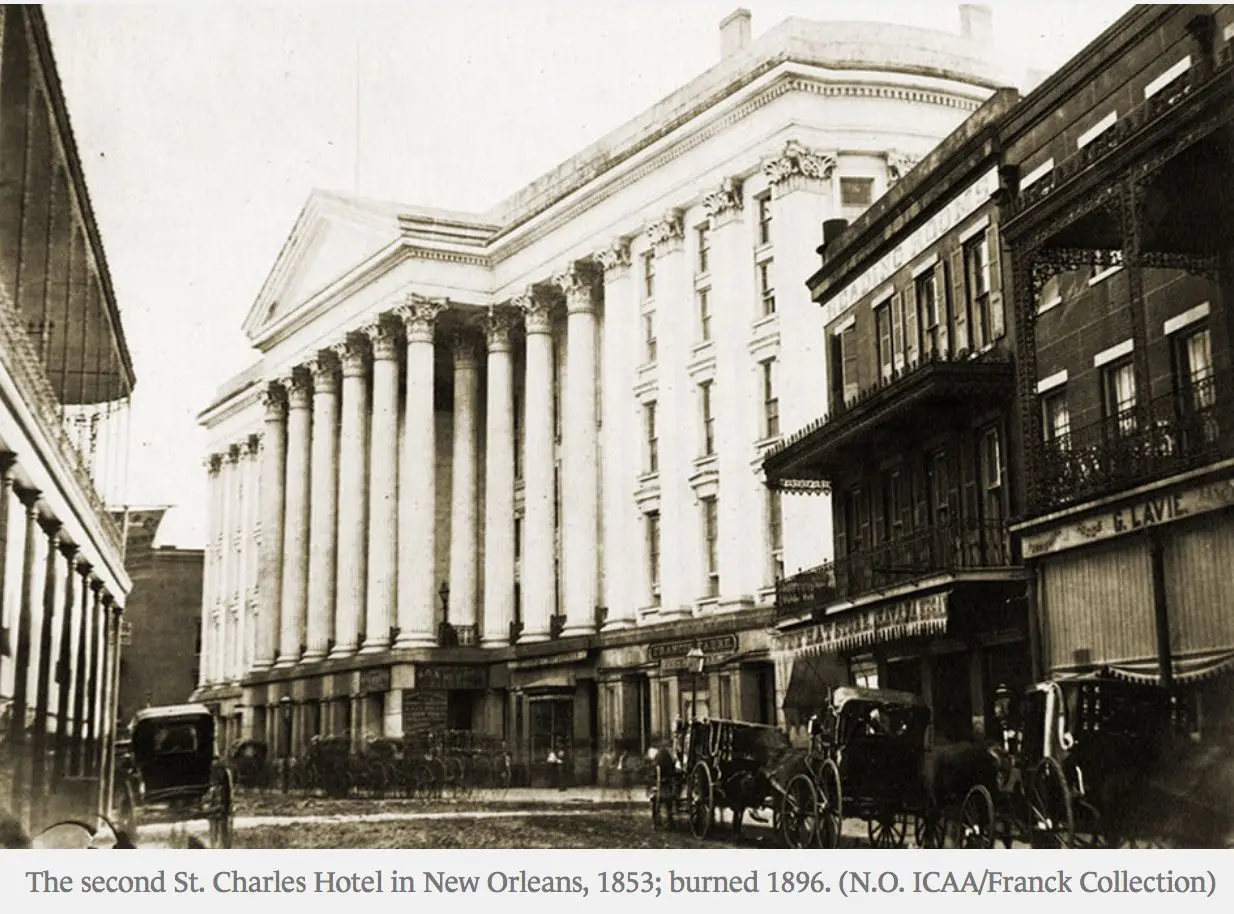Search Posts
Recent Posts
- Vinny Paz to be inducted TODAY into the International Boxing Hall of Fame – CES Boxing June 7, 2025
- In the News… quick recap of the week’s news (6.7.25) June 7, 2025
- Burn with Kearns: Strong without the spend: How scraps became strength tools – Kevin Kearns June 7, 2025
- Rhode Island Weather for June 7, 2025 – Jack Donnelly June 7, 2025
- How to advocate for threatened properties: The Heritage Alliance of Pawtucket June 7, 2025
Categories
Subscribe!
Thanks for subscribing! Please check your email for further instructions.

The Case for Classicism – “the comfort of tradition”
By David Brussat, Architecture Here and There
Michael Rouchell is an architect in New Orleans and a founder of the Louisiana chapter, one of 15 regional chapters of the Institute of Classical Architecture & Art. On March 30, he posted the following remarks in an online discussion of the proposed executive order on the classicization federal architectural style. Public discussion of the E.O. has disappeared almost entirely since the coronavirus hit, but in time the debate will resume. Rouchell’s thoughts constitute one of the most compelling descriptions of the case for traditional architecture, so, pending the resumption of the E.O. issue, here is what he had to say:
The message to architects and the architectural establishment is this:
The world is full of traditions, holiday traditions, religious traditions, local traditions, traditions related to sports such as wearing your team’s uniform and tailgating, traditions related to life events such as weddings and funerals, and we all participate in these traditions and think nothing of them, yet the architecture profession is forbidden to participate in traditions. Traditional architecture is discouraged in architecture schools. (I’m sure that architecture students wear a traditional cap and gown during their graduation ceremonies like all the other university graduates; I wonder why.)
Creativity was not invented 100 years ago, and designing classical buildings is not copying. I could easily argue that classical architecture requires an exceptional amount of creativity. Take a window design, for example. Imagine all the types of traditional window shapes that exist from simple rectangular, arched, circular, elliptical, Serlian, etc., and imagine all the surrounding treatments that can be provided around each of those windows from simple, unadorned openings, casings, aedicules, etc. Imagine the profile variations and the ornamental dressings that can be provided. The variety is nearly infinite. Now what variations of window treatment exist with Modernism? Ribbon window, curtainwall, vertical windows, etc. How many variations of those exist?
The history of architecture is full of renaissances, neo-styles and revival styles; what’s the big deal? Greek Revival architects were inspired by architecture that came two millennia before them, Gothic Revival architects were inspired by architecture that came approximately one millennium before them. H. H. Richardson was inspired by Medieval architecture and McKim Mead & White were inspired by Renaissance architecture, etc. So, what’s wrong with being inspired by buildings built 100 years ago? What’s important is that their inspiration didn’t prevent them from building buildings that were of their time. I see many wood-framed Greek Revival buildings with clapboard siding and double-hung windows, but don’t know of any such examples from Antiquity.
The message to the general public is this:
All commercial buildings and a good percentage of residential buildings are designed by architects. The commercial buildings include the fast-food restaurants, the strip malls, the suburban chain hotels that all look the same, the big box stores, the storage warehouses, etc. I think that there is an assumption that architecture only exists where the prominent commissions exist, not realizing that all these lesser buildings were done by architects as well. That said, what happened to aesthetics and creating beautiful streets and neighborhoods like those of the past? If all the buildings of a typical suburban highway strip were all designed by architects, why doesn’t it look beautiful? I think that 100 years of co-existing with modernism has inoculated the general public to the ugliness and therefore they don’t see it right away unless it is specifically pointed out to them.
Why do historic districts and some neighborhood developments have architectural review boards to review an architect’s plans? In the case of historic districts, how did the builders and architects of the past manage to design such great buildings without these architectural reviews? Architects are required to go to architecture school and then take a test to be licensed, yet they need to have a board review their work. Why can’t architects design buildings that fit in with the neighborhood?
The architecture profession is the only one where past practitioners by and large out-perform and out-design current practitioners. No one would want to go to a hospital for treatment using outdated medical procedures, yet there is a demand for historic traditional architecture. As Andrés [Duany, a leading New Urbanist] would point out, try to find an ugly building that was built more than 100 years ago, and then see how easy it is to find an ugly building built within the last 100 years.
Most importantly, traditional architecture is an option. If you are opposed to the design of, for example, a V.A. hospital because it is ugly does not mean you are opposed to a V.A. hospital; it means the design is terrible. Often we have no choice but to accept the design of whatever architect was hired, and this is the case with large federal projects.
Link to full story: https://architecturehereandthere.com/2020/04/10/rouchell-case-for-classicism/

My freelance writing and editing on architecture and others addresses issues of design and culture locally and globally. I am a member of the board of the New England chapter of the Institute of Classical Architecture & Art, which bestowed an Arthur Ross Award on me in 2002. I work from Providence, R.I., where I live with my wife Victoria, my son Billy and our cat Gato. If you would like to employ my writing and editing to improve your work, please email me at my consultancy, dbrussat@gmail.com, or call (401) 351-0457 https://architecturehereandthere.com/
